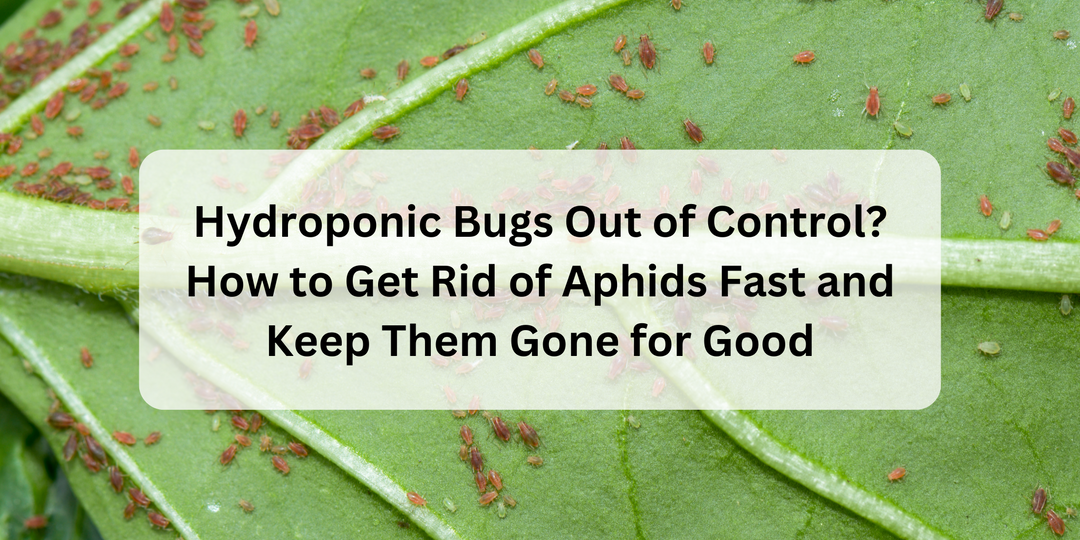How to Effortlessly Grow Basil Indoors Using Hydroponics
4Unlock the Secrets to Growing Thriving Basil Hydroponically Indoors
Growing basil hydroponically offers a year-round supply of fresh, aromatic herbs that are perfect for any dish. Basil is one of the most rewarding herbs to grow due to its fast-growing nature and minimal space requirements. Whether you’re an experienced gardener or just starting out, basil thrives in a controlled environment, making it ideal for small-scale indoor gardening. In this blog, we’ll walk you through the essentials of growing basil hydroponically, from selecting the right variety to maintaining a healthy, productive plant.
Why Basil Is Perfect for Hydroponic Growing
Basil is a versatile and flavorful herb that enhances a wide range of dishes, from pasta and salads to homemade pesto. Growing basil hydroponically allows you to enjoy fresh herbs throughout the year, ensuring that your kitchen is always stocked with flavorful leaves. Basil grows quickly and easily in a small indoor setup, making it an excellent choice for beginners or those looking to expand their herb garden without the need for outdoor space. The compact nature of basil plants also makes them well-suited for those with limited gardening space.
Variety Recommendations

Choosing the right variety of basil can greatly impact the flavor and yield of your hydroponic garden. Here are some great basil varieties to consider for hydroponic growing:
- Genovese Basil: Known for its large leaves and intense aroma, this variety is ideal for making pesto or adding to Italian dishes.
- Sweet Basil: Mild and versatile, sweet basil is perfect for a wide range of culinary uses and grows quickly in controlled environments.
- Holly Dolly Basil: A unique variety with larger leaves and a distinctive flavor, Holly Dolly basil adds a fresh twist to any dish and grows well in small-scale hydroponic setups.
- Thai Basil: For those who love Asian cuisine, Thai basil offers a spicy, anise-like flavor that can elevate any dish.
Growing Conditions for Hydroponic Basil
To ensure healthy and productive basil plants, providing the right growing conditions is essential:
- Light: Basil requires 12-16 hours of light per day. If growing indoors, use a full-spectrum grow light to replicate sunlight. Position the light correctly to prevent overexposure or underexposure.
- Temperature: Keep the temperature between 65-80°F (18-27°C), as basil prefers a warm environment. Avoid placing your system near cold drafts or in areas with extreme temperature fluctuations.
- Spacing: Basil plants need room to breathe. Space plants about 4-8 inches apart to ensure adequate airflow and prevent overcrowding.
- pH Levels: Basil grows best in slightly acidic conditions. Maintain a pH level between 5.5 and 6.5. Regularly monitor and adjust the pH to keep it within the optimal range.
Nutrient Needs
Basil thrives on a simple vegetative nutrient solution throughout its life cycle. There’s no need to switch to a bloom ratio, as flowering diminishes the flavor of the leaves. By sticking to a vegetative nutrient solution, you’ll encourage robust leaf growth, which is exactly what you want from your basil plants.
Each nutrient brand has its own recommended ratios, so it’s best to follow the guidelines provided by your nutrient supplier..
Maintenance: Keeping Your Basil Productive

To get the most out of your basil plants, regular maintenance is key. Here are a few tips to ensure continuous growth:
- Harvest Regularly: Frequent harvesting not only gives you fresh basil but also encourages the plant to produce more leaves. Regularly pinch off the top leaves, starting when the plant reaches 6-8 inches in height. This will prevent the plant from flowering, which affects the flavor and signals the plant’s end-of-life cycle.
- Pruning: In addition to regular harvesting, prune any leggy growth to keep your basil bushy and productive. Removing flower buds as soon as they appear will also extend the plant’s lifespan and keep the flavor strong.
- Monitor Water Levels: Keep an eye on water levels in your system, topping up as necessary. Regularly refreshing the water and nutrient solution will prevent buildup and ensure that your basil plants continue to thrive.
Troubleshooting Common Issues
Even with the best care, basil can sometimes face issues. Here are some common problems and how to address them:
- Yellowing Leaves: If you notice yellowing leaves, it’s likely due to high pH or too much nutrient concentration. The solution is simple: add fresh water to your system to dilute the solution and flush the plant. This reset can help get your plants back on track.
- Poor Growth: If your basil isn’t growing as quickly as expected, check the water temperature. Cold water can slow down growth. Ensure that the water is kept at a consistent, warm temperature to promote healthy development.
By paying attention to these potential issues and making small adjustments, you can prevent common problems and enjoy a healthy, productive basil plant.
Final Thoughts
Growing basil hydroponically is an easy and rewarding way to keep a fresh supply of herbs on hand year-round. With the right variety, proper growing conditions, and regular maintenance, your basil plants will thrive, providing you with a steady supply of aromatic leaves for months.
If you’re interested in expanding your hydroponic garden, check out our blogs on how to grow tomatoes hydroponically or how to grow cucumbers hydroponically for more tips and tricks. And if you’re new to indoor gardening or want to learn the proper techniques from the start, consider joining our 4-day Indoor Garden Challenge. It’s perfect for beginners and will help you grow your own food indoors the right way!





We finally installed out Eden 4 tier tower purchased in Novemver 2024 and planted a week ago! I am so excited to witness that everything has sprouted. Your knowledge transfer is so helpful. Thank you! Is there a social media supporting community I can join?
Leave a comment